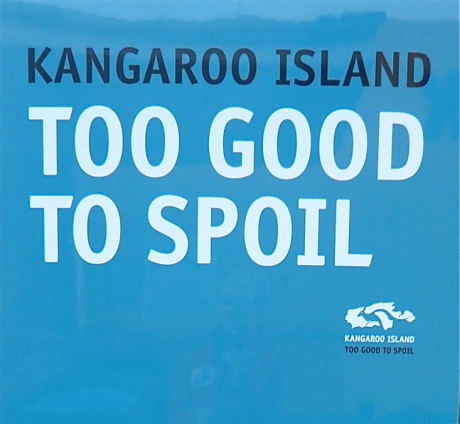12 and 13 July
Well it’s time to depart Base Camp Seaford and head to an island, there is just something about islands!
Coincidentally our buddy Louise Crossley was also going and had already booked the ferry and accommodation so we teamed up. Our tasks were simple, just organise the provisions, fuel up and collect her in Adelaide’s CBD.
KI is the 3rd largest island in Australia, has some 4400 residents and boasts a rich history, green countryside, famous beaches, tall cliffs, flora and fauna, one third being Conservation Parks or Wilderness Protection Areas. Agriculture has been the norm since settlement. Produce is high on the agenda, with special honey created by the Ligurian Bolongne Bees, wines, and fresh water crayfish Marron, all of which we sampled!
Louise booked us into a spot in Vivonne Bay in the south and over the 3 days we focused on the south and southwest as our destinations. The island was too large (some 1600 Kms) for us to do it all, so we picked what we were interested in as most travellers do, in our case it was the environment, wildlife and historical locations though even then we didn’t get to every site of discussion.
It’s believed that Aboriginal inhabited the island until about 16000 years ago. Why did they leave you might ponder, the question is unresolved. Matthew Flinders sighted the island in 1802 and named it Kangaroo Island for obvious reasons and his crew delighted in the fresh food! Whilst they were in the area Baudin sailed in on the Le Georgaphe, the exchanges were very friendly with much shared by Flinders. With the return of Baudin in 1803, he named much of the coast with French names as one would expect.
Sealers were the first of the non-indigeounous settlers, soon followed by the first free European South Australian settlement in 1836, but due to hardships on many levels these settlers were highly challenged and only lasted 4 years. However with determination and drive, a few hundred folk formed the nucleus of community that today descendants continue to maintain the family traditions.
Many shipwrecks occurred from 1847, some 60 ships have been lost around the coast and as such a number of lighthouses were constructed, the first being in 1853 at Cape Willoughby.
Shouldn’t every place on the planet adopt this motto?
Just about ready to board…note it’s almost dark.
I chose the back seat and posted Lousie to the task of navigator since the roads weren’t on the bikes navigation system. There was an hour and half drive from Pennshaw to Vivonne Bay and we had to have a meal before we left there. Needless to say we arrived fairly late to our accommodation even though we took a short cut to drop off about 30 minutes of the drive.
Vivonne Bay Beach in the morning whilst Adrian had his last coffee…and our exploring began.
 Bird watching at Murray Lagoon where we saw Blue-billed ducks, Black swans and a lot more.
Bird watching at Murray Lagoon where we saw Blue-billed ducks, Black swans and a lot more.
I don’t often see myself next to anyone in a pic, so it’s always a surprise as to how short I actually am!
It was time to have lunch, so we chose this spot and what a spot it was!
Adrian read that this beach was to be the best beach in Australia, though we all found it to be gorgeous we speculated there are probably many more that are as incredibly beautiful all round this country.
 We have a thing for the geology, but in this case have no idea as to the makeup of this stone.
We have a thing for the geology, but in this case have no idea as to the makeup of this stone.
 On our trek to the Seal Colony not far from the lunch spot, we called into the Wheat Threshing Circle…are you able to imagine growing wheat in the sand dunes just adjacent, we shook our heads in disbelief.
On our trek to the Seal Colony not far from the lunch spot, we called into the Wheat Threshing Circle…are you able to imagine growing wheat in the sand dunes just adjacent, we shook our heads in disbelief.
It was here in Tadpole Bay that we spotted amongst a list of birds,a pair of Osprey, yes Osprey. We later discovered whilst chatting with the Lighthouse Keeper at Cape Borda that the nest there was proven to be the same nest that the Flinder’s expedition naturalist/artist had painted during their data record collecting, an incredible piece of information and if true, absolutely incredible.








Love the rocks! I could do something with the shapes and colours in ” no idea as to the makeup of this stone” FAB!